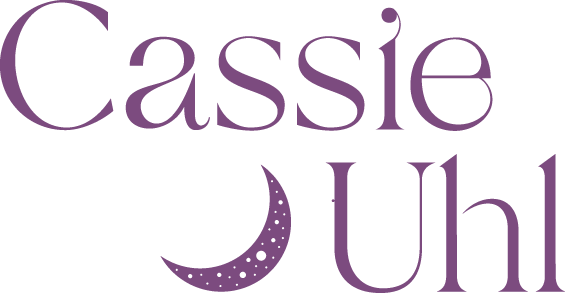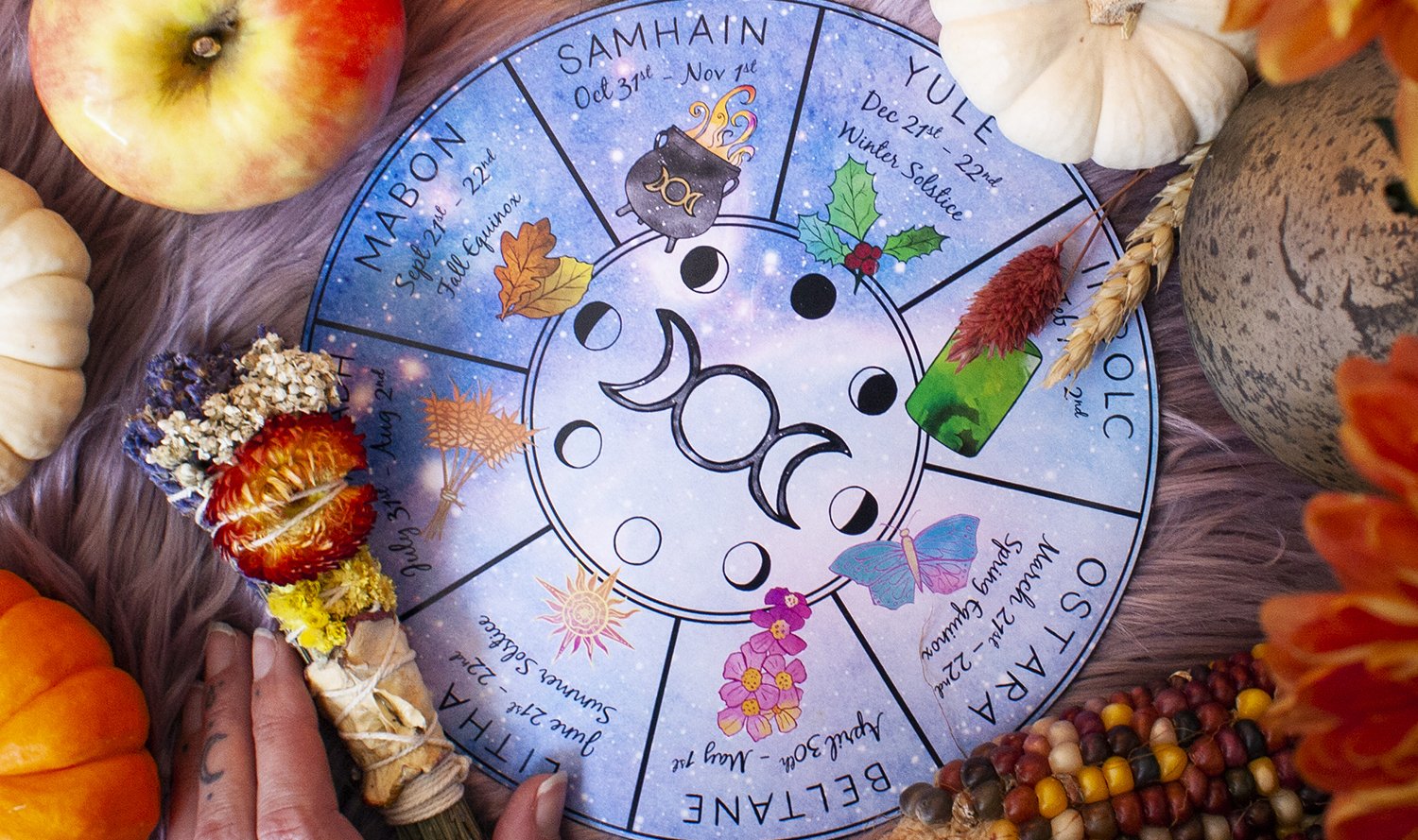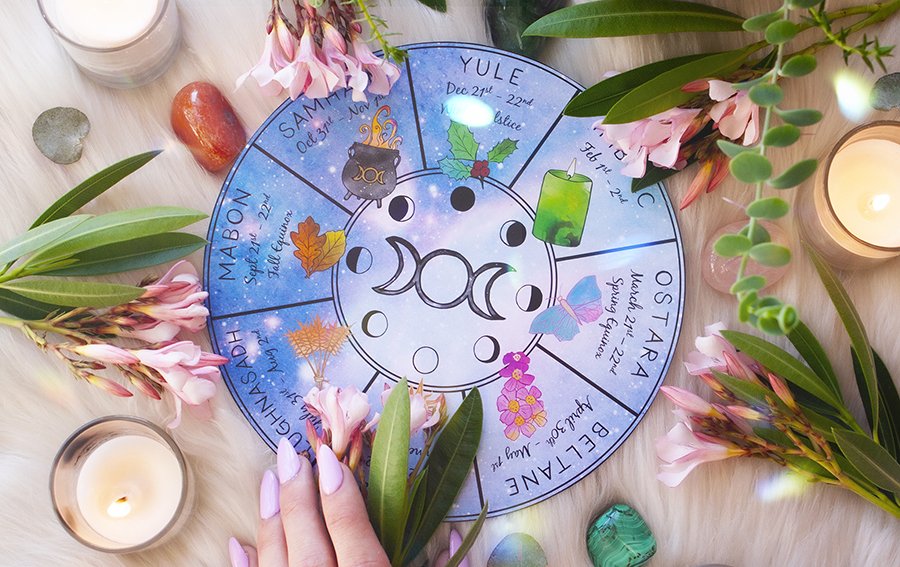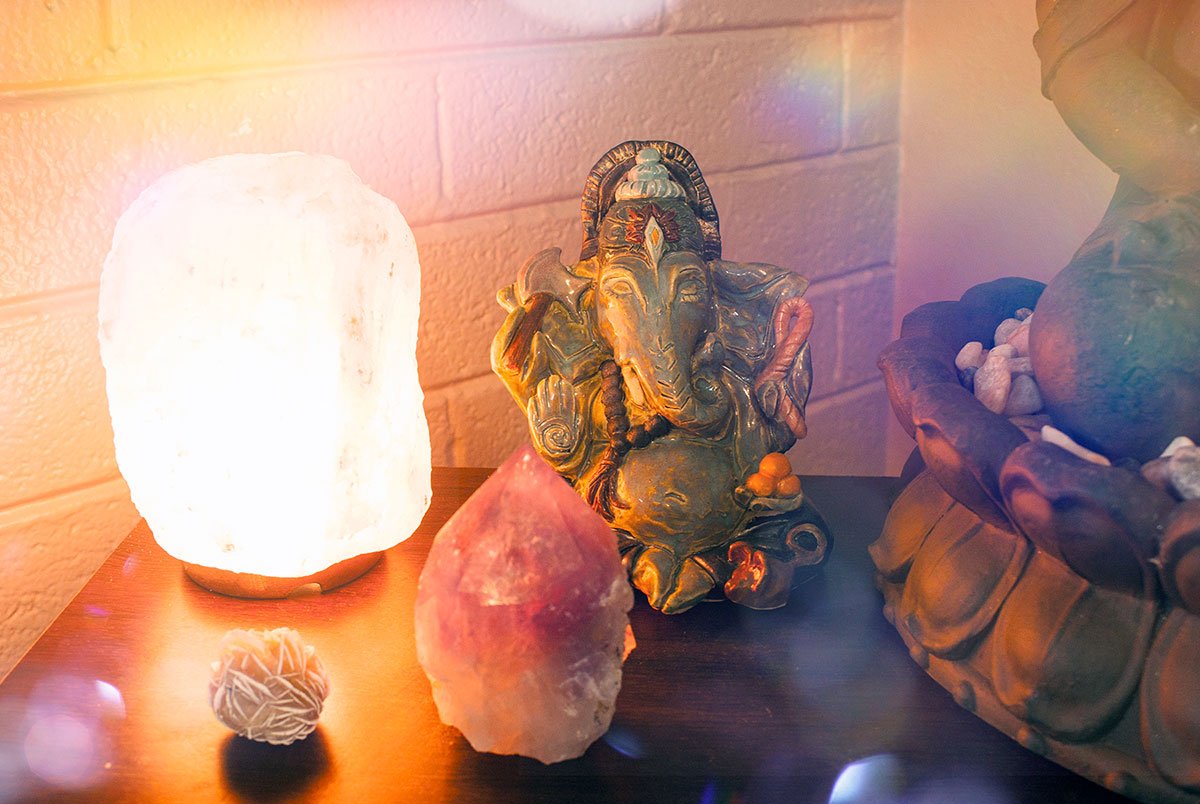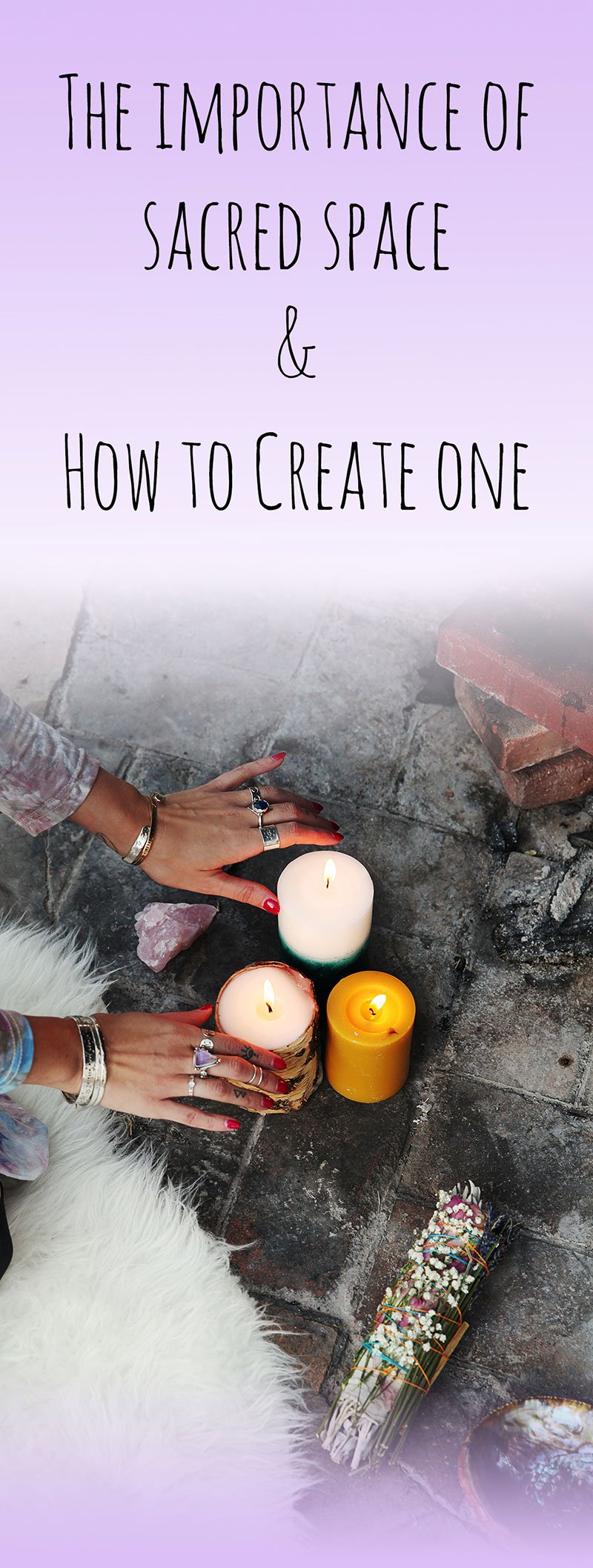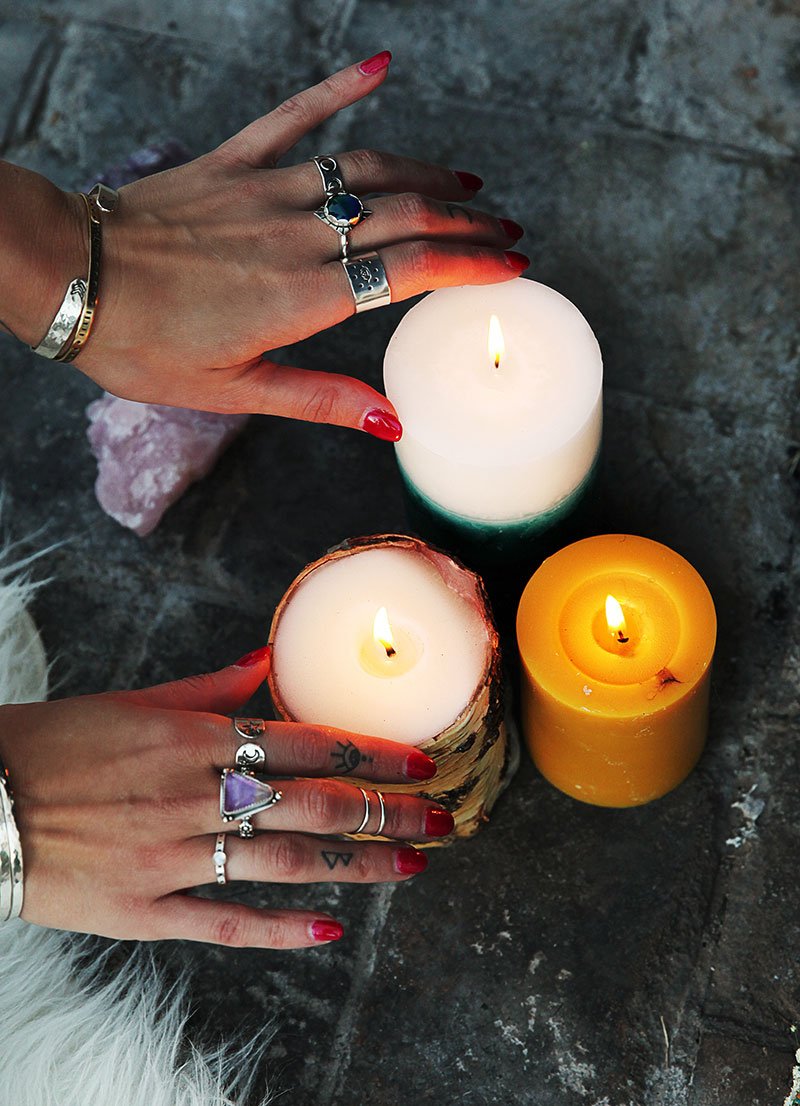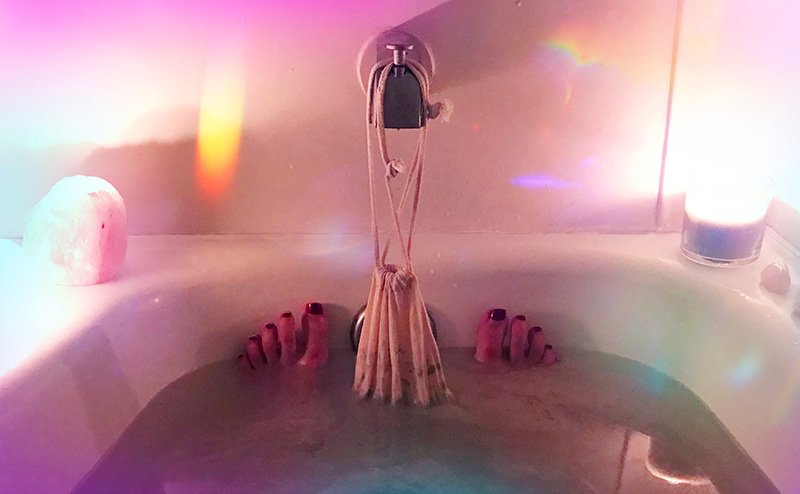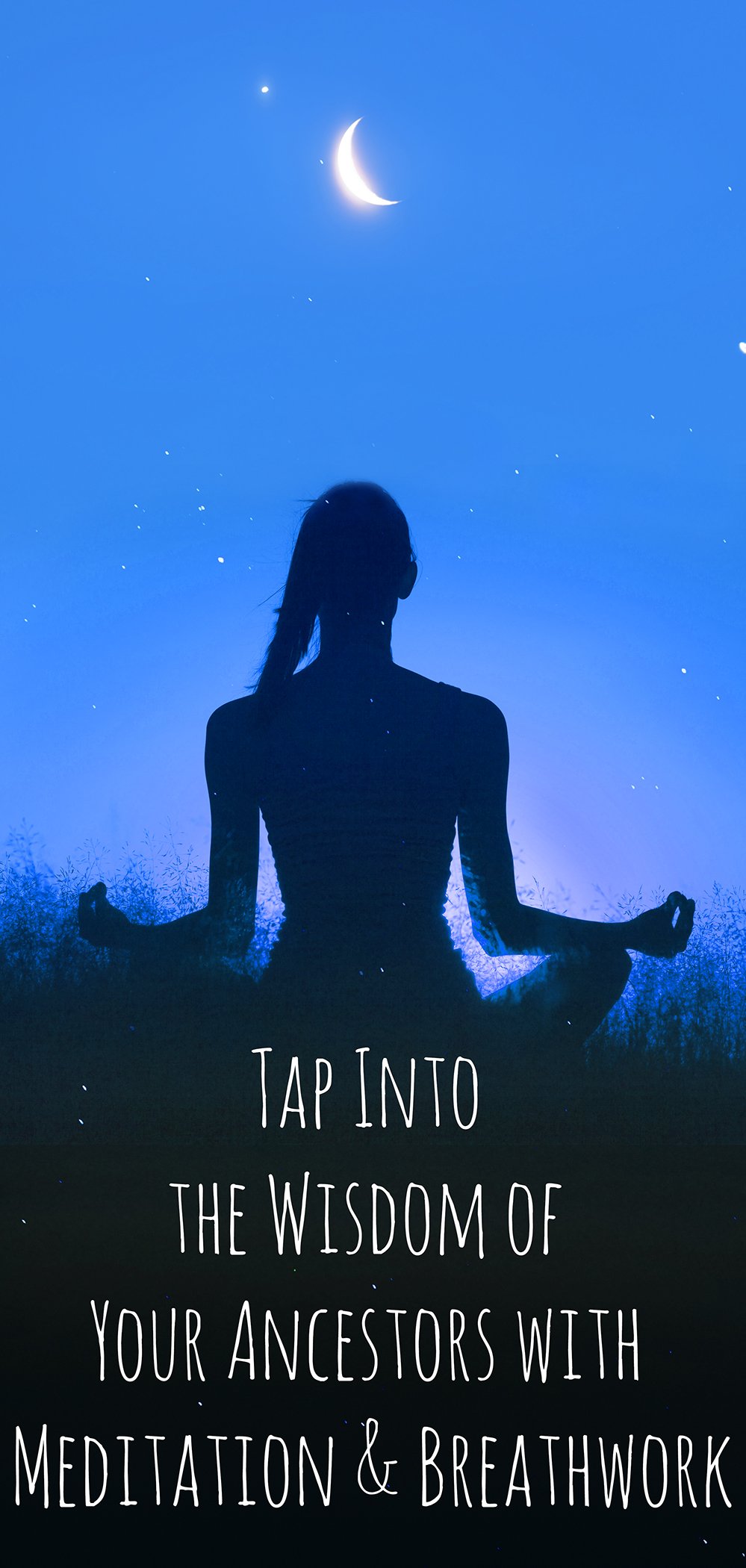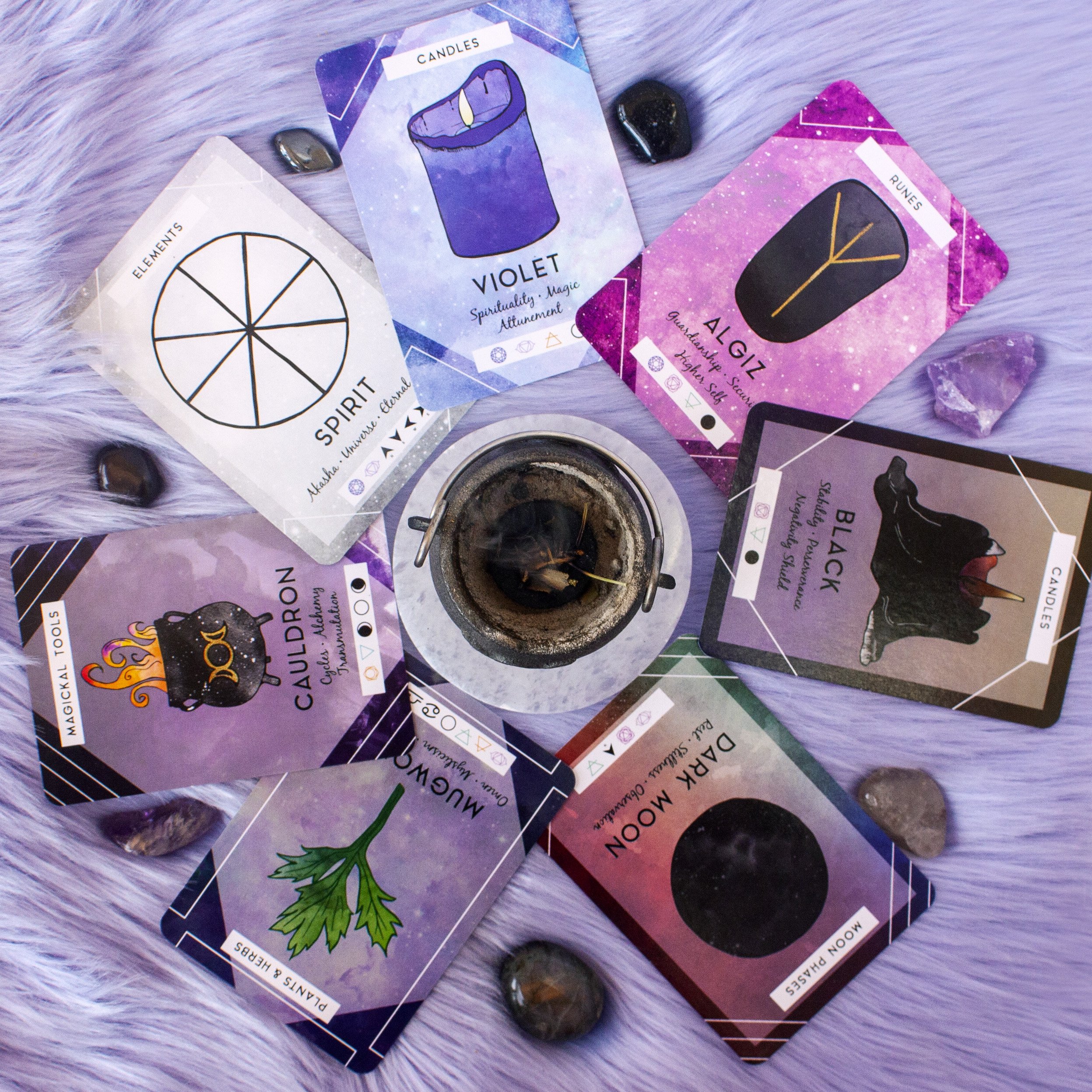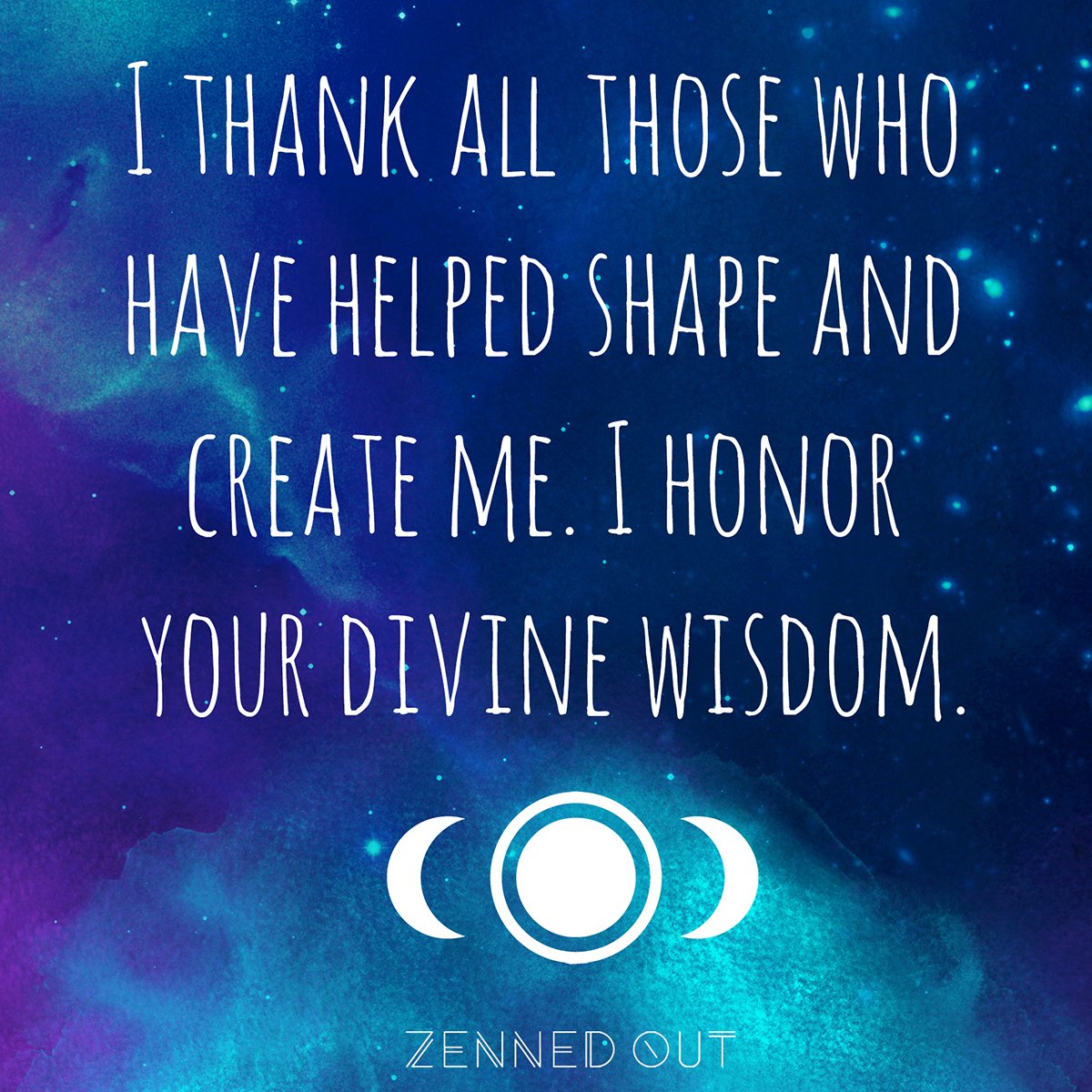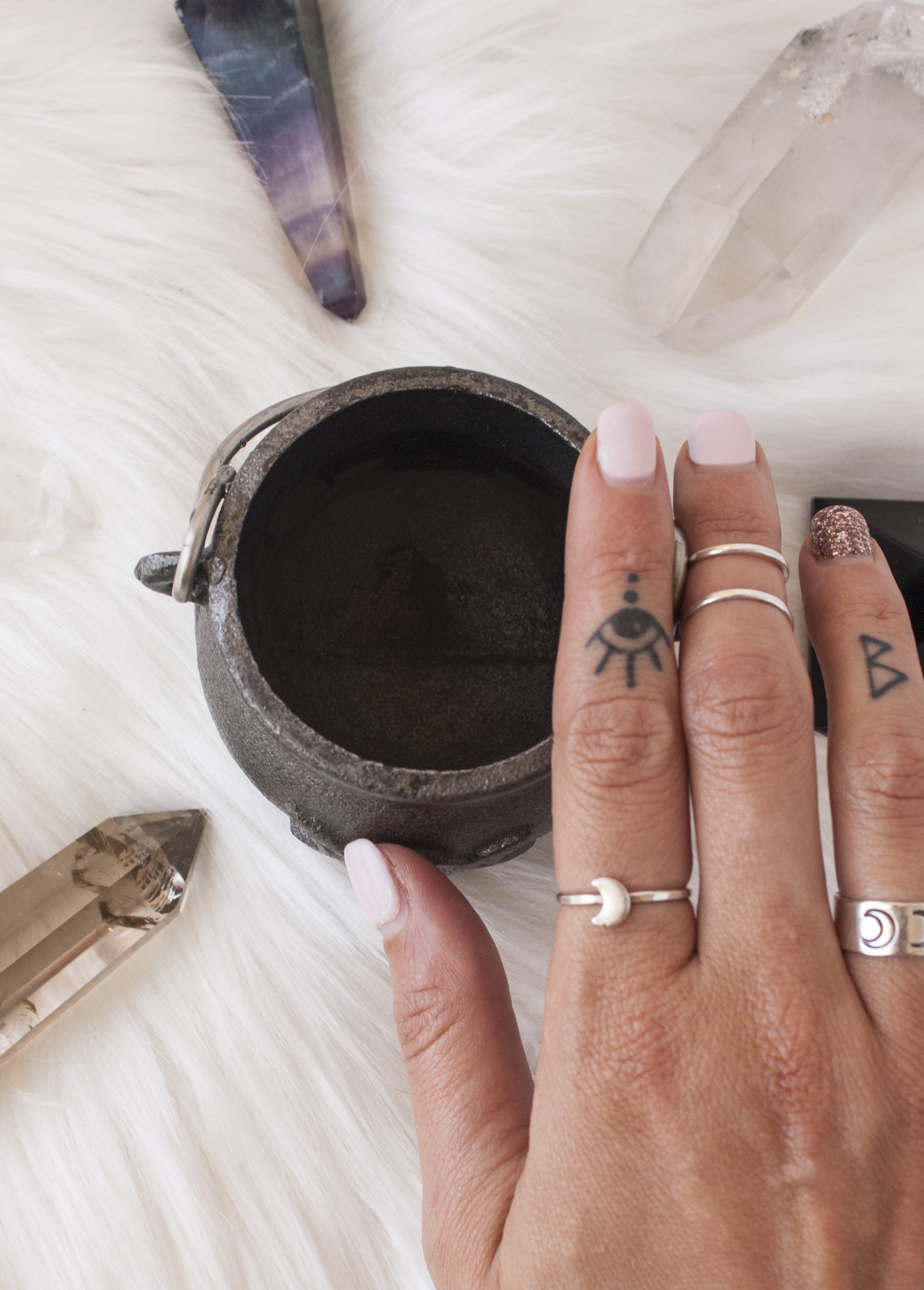What is the Wheel of the Year?
Learning more about the Wheel of the year will not only help you feel more in-tune with nature, but it will give you rituals to use year-round to connect with yourself and Mother Earth. This topic can seem a little overwhelming when getting started, so I will provide you with a quick overview with this post. I'll cover what the Wheel of the Year is, who uses it, how to use it, and some resources, including a free printable of a wheel that I created.
Learning more about the Wheel of the year will not only help you feel more in-tune with nature, but it will give you rituals to use year-round to connect with yourself and Mother Earth. This topic can seem a little overwhelming when getting started, so I will provide you with a quick overview with this post. I'll cover what the Wheel of the Year is, who uses it, how to use it, and some resources, including a free printable of a wheel that I created. Keep scrolling to read more and find a link to your free copy.
What is the Wheel of the year?
The Wheel of the year is comprised of eight Sabbats or festivals that occur on or around the same day each year. The eight Sabbats include four solar events, i.e., the Summer Solstice, Winter Solstice, Spring Equinox, and Fall Equinox. The remaining four festivals are based on seasonal changes and farming. Here's a rundown of the eight Sabbats, what they align with, and their dates:
Samhain: October 31st - November 1st // Samhain is considered the witch's New Year. It is the third and final harvest season and ends the seasonal Wheel.
The Winter Solstice & Yule: December 21st or 22nd // Winter Solstice
Imbolc: February 1st // Holiday is known as Candlemas, which signifies the first signs of Spring
The Spring Equinox & Ostara: March 20th // Spring Equinox (first day of Spring)
Beltane: April 30th - May 1st // A fire ceremony that signifies the midpoint between Spring and Summer
The Summer Solstice & Litha: June 21st or 22nd // Summer Solstice
Lughnasadh: July 31st - August 1st // Marks the first harvest of the year
The Autumn Equinox & Mabon: September 21st - September 23rd // Fall Equinox
© Cassie Uhl 2015-2025. Please properly credit when sharing.
Who Celebrates the Wheel of the Year?
You don't have to subscribe to a specific religion or label to use or observe the Wheel of the year. Most notably, Wiccans, Pagans, Neo-Pagans, and practicing witches reference the Wheel of the Year for festivals and rituals. If you don't identify with any of these labels, but like to dabble in ritual or spellwork, that's perfectly fine! You'll still be able to find many uses for this powerful tool.
Where did the Wheel originate?
The Wheel of the year is rooted in several cultures and combines festivals from Romans, ancient Greeks, Germanic cultures of northern Europe, and the Celts. It's for this reason that you'll see a variety of names for some of the festivals and differing dates. For example, Lughnasadh also goes by Lammas or Lughnasa, and Litha also goes by Midsummer.
The full Wheel of eight festivals is a relatively new creation that came about in the 1950s. The groups listed above each celebrated some of the eight Sabbats, but the evidence is lacking that any of them celebrated all eight. Combining all eight into a wheel was a way to honor and streamline all of the celebrations that many Pagans and Wiccans hold dear.
How to Celebrate The Wheel of The Year
Learning to implement the Wheel of the Year can feel overwhelming, but the way that you work with it can be as simple or complex as you want it to be. There are countless ways to celebrate each celebration on the Wheel of the Year. Check out the list below for a general list of ways you can enjoy the Wheel of the Year. For specific rituals and celebration suggestions, check out The Goddess Discovery Book V2 or search our blog for the Sabbat you'd like to learn more about.
Spend time outside in nature.
Attend a local celebration or create your own for some or all festivals.
Conduct a ritual for each Sabbat. You can find several ritual examples for each Sabbat by searching the Sabbat on our blog.
Add decor and scents to your house based on the Wheel of the Year.
Cleanse and update your altar or sacred space for each Sabbat.
Cook specific foods for each of the Sabbats.
Enjoy crafts with your Goddess circle or kiddos based around the Sabbats.
Go within and try journaling for each Sabbat.
Perform a unique tarot or oracle card spread.
Here's an example of how I often perform my altar update for a new Sabbat.
Additional Resources
Want to dig deeper into using the Wheel of the Year in your practice? Here are three ways to learn more:
1. Click here for my wheel of the year graphic in my magical printables bundle.
2. Click here to purchase Understanding The Wheel of The Year, which goes into detail about the Wheel of the Year and contains wheel images for both the Northern and Southern hemispheres, rituals, card spreads and journal prompts for each Sabbat.
3. Find links to blog posts specifically for each Sabbat below.
Here are other books that I love about the Wheel of the Year: The Magical Year by Danu Forest, The Great Work by Tiffany Lizac, and The Modern Witchcraft Guide to the Wheel of the Year by Judy Ann Nock.
I hope you find the Wheel of the year as special and magical as I do! It has so many positive and powerful applications to bring life to your sacred practices.
The Importance of Sacred Space & How to Create One
I think of sacred space as being very root chakra related. A sacred space feels like home. It feels safe to do your most vulnerable work and have your deepest breakthroughs there. It feels safe to put your worries, your fears, your joys, your disappointments, everything that you have and are on the altar there.The best part is that you don’t need anyone to hold this sacred space for you. You can hold it for yourself.What is it, exactly? It’s any space that you set aside as sacred or holy. It’s a place where you can meditate, do magic and ritual, and connect to your highest self. This might look like an altar, or it might not.
I think of sacred space as being very root chakra related. A sacred space feels like home. It feels safe to do your most vulnerable work and have your deepest breakthroughs there. It feels safe to put your worries, your fears, your joys, your disappointments, everything that you have and are on the altar there.
The best part is that you don’t need anyone to hold this sacred space for you. You can hold it for yourself.
What is it, exactly? It’s any space that you set aside as sacred or holy. It’s a place where you can meditate, do magic and ritual, and connect to your highest self. This might look like an altar, or it might not. If you are interested in creating your own sacred altar, check out this blog post.
Your space is personal and unique to you. This blog post is all about creating sacred space in your home, but remember that you are sacred, too, and any space you hold for yourself can be a sacred space. Divinity doesn’t have to be experienced just at your altar.
With that being said, here are a few ideas for things you might like to include in your sacred space:
A Window
Having your sacred space by a window can be a beautiful way to connect with nature even from the inside. See the sun, the stars, and feel the breeze right in your space.
A Moon Calendar
Connecting with the phases of the moon can help anchor you and connect you with nature. Having moon ritual cards in your sacred space where you do rituals and other healing practices that you might base around moon cycles is ideal.
Crystals
Crystals can raise the frequency of your space and bring in specific energies you want to work with. The options are endless, but some crystals you might like to have in your sacred space are:
Amethyst to help you connect with your intuition and boost your mood
Clear quartz (the ultimate crystal!), the ultimate healer, balancer, manifestor, and energy amplifier
Rose quartz for heart opening
Labradorite for self-discovery
Citrine to bring in energizing and creative energy
Fluorite to cleanse your aura and draw off negative energy
Obsidian or black tourmaline for grounding
Selenite to access higher guidance and open your crown chakra
Candles
Candles and their colors have all different types of uses. You can use them in spell work, rituals, burning ceremonies, or just to bring some soft light into your space. Here are some different candle color meanings (source):
Blue for harmony, peace, and tranquility
Red for passion and action
White for purifying, cleansing, and clarity
Purple for psychic abilities and spiritual awakening
Yellow for inspiration and creativity
Orange for energizing, joy, and success
Pink for love, compassion, and forgiveness
Green for nature, growth, and fertility
Brown for grounding, Earthy energy
Learn more about candle magick here.
A Feather
You can use your feather to direct the flow of smoke when cleansing with a smoke wand or herb. For example, when cleansing yourself you might want to circle the smoke around the top of your head or other parts of your body. A feather will help you do that!
Plants & Herbs
Plants and herbs have so many practical and magickal uses. You can use herbs in your sacred space for burning or tea-drinking, and you might like to also have dried or fresh flowers, or other plants that you feel connected to.Learn more about herbal magick here.
Essential Oils
Like plants and herbs, essential oils also have many practical and magickal uses. Use them in your sacred space for ritual, to anoint your candles, to assist in meditation, or to massage your body. Some go-tos you might like to have are:
Geranium oil for self-love
Juniper for protection and purification
Cilantro oil for releasing negative energy
Lavender oil for peace and healing
Frankincense and myrrh oil for meditation
Yarrow oil to connect with your psychic abilities
Tarot or Oracle Decks
Your sacred space is the perfect place to keep any divination tools you use such as tarot cards, oracle cards, or runes. Display the card or rune you’re working with at the moment on your altar as a visual reminder of the energy you’re working to create, or the intentions you’re working to manifest.
Visual Representations of Goddesses You’re Working With
This could be a printed photo, a statue, an oracle card, a painting, or another creative representation that resonates with you. Everyone’s needs are different, so choose a goddess that you feel drawn to work with. That likely means that she has a message for you.
Salt Lamp
Salt has been touted for its magical properties for a long time. Practically, having a salt lamp in your space releases negative ions (which actually make you feel good, despite the name!) and detoxifies the air. But magically, salt also purifies and protects against psychic attacks. If you don’t want to go for a lamp, you can also opt for a small bowl of sea salt.
Additional Representations of the Four Elements
You don’t actually need additional representations of the four elements (fire, earth, water, and air), since you likely already have them on your altar. But feel free to add any other elements to your space that you’d like, such as a bowl of water.
Learn more about the four elements here.
Any Sacred Possessions
Anything that feels sacred and holds special meaning to you, even if it doesn’t make sense to anyone else, can also go in your sacred space. Maybe it’s photographs, special objects, or mementos. Whatever it is, feel free to add it.
You can customize your sacred space or altar depending on where you are in life and what you’re trying to manifest. For example, you might create an abundance altar centered around money, photos of abundance goddesses like Lakshmi, tarot cards like the 10 of pentacles, and herbs or spices that promote abundance when you want to manifest material wealth.
The most important thing to remember is that this space is for you. All of the above are just options and suggestions. Create a space that feels sacred to you, and you will have created a sacred space.
Manifesting with Runes // With Free Rune Printable
Being a master manifestor is a skill that many seek. There are endless techniques and tools available when it comes to manifesting like a pro and I’m sure you’ve tried some of them. Dream boards, visualization, mantras, and crystals are a few popular manifesting tools.While there’s nothing wrong with these techniques, there’s one powerful manifesting tool that’s often overlooked, Runes.Runes are symbols that each carry unique universal energy. These special symbols were used by Nordic and Germanic cultures in Northern Europe as forms of language, for religious purposes, and as tools of magick and divination.Author Lisa Peschel explains this in her book, A Practical Guide to The Runes.
Being a master manifestor is a skill that many seek. There are endless techniques and tools available when it comes to manifesting like a pro and I’m sure you’ve tried some of them. Dream boards, visualization, mantras, and crystals are a few popular manifesting tools.
While there’s nothing wrong with these techniques, there’s one powerful manifesting tool that’s often overlooked, Runes.
Runes are symbols that each carry unique universal energy. These special symbols were used by Nordic and Germanic cultures in Northern Europe as forms of language, for religious purposes, and as tools of magick and divination.
Author Lisa Peschel explains this in her book, A Practical Guide to The Runes.
Before this time [being used as a form of language] runes were primarily a magickal system of pictographs representing the forces and objects in Nature. It was believed that by calling upon the appropriate rune one could thereby make contact with the force in Nature the symbol represented.
Each Runic symbol creates a specific type of energy and some lend themselves to manifesting more than others. Here’s a list of the most powerful manifesting Runes and what they’re most aligned with manifesting.
Search this list to identify the perfect Rune(s) to aid your current manifesting project!
The Best Runes for Manifesting
Fehu for abundance:This fast-acting Rune is perfect for helping you manifest wealth. It is great for initiating new monetary ventures and circulating abundance.
Uruz to keep you going: Employ the use of Uruz to bolster your strength and remove self-doubt during manifesting. This Rune will also help you with stamina while manifesting goals that take more time
Thurisaz for change: The original meaning of this Rune is “thorn” so it’s not surprising that the meaning of it is all about breaking through. Use this Rune when you’re working on manifesting big changes in your life and you need a powerful and directive catalyst. This Rune can also help you overcome blocks while manifesting.
Gebo for partnerships:This Rune is all about manifesting partnerships. That could be friendships, business relationships, relationships, or marriage. Gebo helps create a balance of energy and is all about equal exchanges. Use this Rune anytime you’re manifesting goals include working with others.
Wunju for happiness: Looking to manifest some more peace and harmony in your life? Wunjo is your Rune! Wunjo is a beautifully powerful Rune that’s great at helping you fulfill wishes, peace, joy, and happiness.
Jara for material objects: If you have your manifesting eye on a material object that requires specific steps to acquire Jera is your Rune. Jera is a great aid for turning dreams into tangible results.
Teiwaz to win: This Rune is all about being victorious. If you’re in the process of manifesting a specific outcome this Rune will be helpful, especially when it comes to competitions. This Rune seeks justice.
Berkana for creation: My personal favorite! Berkano is here to help you birth your big ideas into reality. Recruit Berkano to help lay the fertile ground needed while manifesting new ideas.Now that you know which Runes are your manifesting besties, here are some key ways to work them into your manifesting toolbox. These methods pair perfectly with other manifesting tools mentioned above, so don’t be afraid to mix them up. Already have a vision board for a manifesting project? Put a bird on it! Just kidding, we’ll be using Runes today ;)
Need some Runes to get going? Click here to get your free printable Rune sheet.
5 Ways to Use Runes for Manifesting
1. Put your manifesting Rune in a visible area like your altar, meditation space, bathroom mirror, or on a vision board.
2. Carve your manifesting Rune into a candle that you light regularly as a reminder of what you’re working on manifesting.
3. Wear a Rune talisman. Having a daily wearable reminder is a powerful way to not only be reminded of your manifesting goals but carry the potent power of the Runes with you.
4. Create a Runescript. Linking Runes together in a specific order can have a positive effect on your end results. Learn more about creating a Runescript here.
5. Visualize or meditate on the rune(s) that you’re working with. Hold the image of the Rune you’re using in your mind's eye and try to embody its energy as you meditate or visualize.
If you’ve been unsure about how to use Runes in the past I hope you’re feeling excited to jump in now! Put these powerful symbols to use and start manifesting.
6 Herbal Bath Recipes for Winter Self-Care
Herbs have been used for centuries as magical tools for healing, meditating, and accessing the spirit realm. Whatever your need is, there’s definitely an herb for it!They are said to be so powerful because they hold the energy of Mother Earth within them.Using herbs in your bath is a great way to practice self-care, especially in the colder, cozier months. Unwinding and decompressing from the constant stimulation your senses face in the modern world is important for tuning back into yourself. Herbal baths can boost your mood and be incredibly relaxing and healing.Science actually backs this up.
Herbs have been used for centuries as magical tools for healing, meditating, and accessing the spirit realm. Whatever your need is, there’s definitely an herb for it!
They are said to be so powerful because they hold the energy of Mother Earth within them.
Using herbs in your bath is a great way to practice self-care, especially in the colder, cozier months. Unwinding and decompressing from the constant stimulation your senses face in the modern world is important for tuning back into yourself. Herbal baths can boost your mood and be incredibly relaxing and healing.
Science actually backs this up. A 2002 study found that a daily bath significantly improved the mood and optimism of the participants. Plus, hot baths can relieve muscle pain and improve your sleep.
Adding herbs to your bath brings this mind-body practice to the next level, positively affecting all aspects of your being, including physical, mental, emotional, and spiritual.
I recommend filling a muslin bag with your herbs (if you’ve ordered jewelry from us before the muslin bag that comes with your order works perfectly!). The measurements don’t need to be exact, but I recommend using about a ¼-⅓ cup of dried herbs. Then loop the bundle onto the faucet and let your tub fill with steaming water as it runs through the bag. When the tub fills, drop your bag into the water. Let the water cool down for 20-30 minutes as it infuses with the herbs, and climb in!
For an extra dose of self-care, light candles and burn incense or diffuse essential oils as you soak. If you can’t find all of the herbs listed in the recipes below you can substitute with essential oil, leave it out completely, or substitute with a different herb.
Scroll down to check out six herbal bath recipes for those cozy nights when it’s way too cold to go outside.
Herbal Bath to Tap into the Divine Feminine
Dried violet, yarrow, calendula, and lavender
Tapping into the feminine, lunar energy within you is all about accessing the energy of being, manifesting, and opening yourself to your truth, creativity, and compassion.These herbs help you do exactly that. Dried violet leaves stimulate creativity and draw prophetic dreams and visions. Yarrow promotes psychic opening and love. Calendula brings healing and energetic protection, and lavender soothes and calms to promote the passive energy of being.
Bonus: Calendula also soothes the skin and promotes cell repair.
Optional: Add a moonstone crystal to your bath.
Herbal Bath to Attract Abundance
Chamomile, lemongrass, and patchouli
Chamomile relaxes you and opens you to receiving abundance (plus, it’s antioxidant-rich and soothes your skin). Lemongrass brings focus and clarity of purpose, and patchouli is a powerful herb for helping you attract and manifest your dreams. Patchouli also balances the sacral chakra, which governs emotions, sexuality, wealth, and prosperity.
Optional: Add a jade crystal to your bath.
Herbal Bath to Promote Self-Love
Rose-hips, lavender, elecampane, and balm of gilead
Rose-hips promote healing, compassion, and self-love. Lavender balances and calms while elecampane opens the heart chakra. Balm of gilead promotes love and helps you manifest your desires.Optional: Add a rose quartz crystal to your bath.
Herbal Bath for Amazing Sleep
Vetiver, chamomile, and passionflower
Vetiver’s soothing qualities create a state of tranquility. Chamomile relaxes the mind, and passionflower eases stress and calms the “monkey mind.” If you have trouble sleeping, try this bath!
Optional: Add a selenite crystal to your bath. Please note, selenite is very water-soluble! If you want to keep your selenite as-is, keep it on the edge of the tub. It’s safe to add it to your bath but may come out a little smaller ;)
Herbal Bath for Emotional Healing
Aloe, motherwort, and lemon balm
Aloe promotes inner healing and overcoming blockages, while motherwort soothes the nerves and emotions to bring rest to your mind. Lemon balm promotes healing and helps treat insomnia from heartbreak and stress (and it soothes and heals your skin while stimulating blood circulation).Optional: Add a rhodochrosite crystal to your bath.
Herbal Bath to Tap into Intuition
Rosemary, juniper, and honeysuckle
Juniper balances the third eye chakra, the center of intuition, inner vision, wisdom, and deep perception. Honeysuckle aids confidence and sharpens intuition, and rosemary clears unwanted thoughts and negative thought patterns.
Optional: Add an amethyst or sodalite crystal to your bath.
Which bath do you need today? Take a photo of your tub while it cools and tag us at @cassieuhl!
Tap Into the Wisdom of Your Ancestors with Meditation and Breathwork
Samhain, the sacred festival of the dead, occurs on October 31st and the 1st of November. It marks the beginning of winter and the season of the crone. This holiday reconnects us to the cycle of death and rebirth.It is believed that the veil between the spirit world and our world is thin during Samhain, making it easier to communicate with spirits. That’s why it is the best time to honor the wisdom of your ancestors during this time.This meditation and breathwork will take you within, to honor the wisdom you possess inside and the wisdom from those whom you come from.
Samhain, the sacred festival of the dead, occurs on October 31st and the 1st of November. It marks the beginning of winter and the season of the crone. This holiday reconnects us to the cycle of death and rebirth.
It is believed that the veil between the spirit world and our world is thin during Samhain, making it easier to communicate with spirits. That’s why it is the best time to honor the wisdom of your ancestors during this time.
This meditation and breathwork will take you within, to honor the wisdom you possess inside and the wisdom from those whom you come from.
1. Set the stage for your meditation with crystals and EO’s (optional)
There are many different crystals you can use to help you connect with your ancestors. Your energy is unique, so choose the crystals that have worked for you in the past or that you feel drawn to.
Here are 8 crystals that can help you connect to your inner wisdom and wisdom from your ancestors. Choose one or several of these stones to wear or place next to you for your meditation.
Lepidolite will help you get into a calm state and connect you to your third eye chakra, the center of intuition.
Celestite opens your energy to connect with the spiritual realm by helping you relax and transition into a dream state. Rose quartz a crystal of love, creates a safe and welcoming space for both you and the spirits. Amethyst helps to open your third eye chakra and can help you connect to your intuition.
Charoite will help you connect with your ancestors. It is another powerful stone for communicating with and channeling spirits. It helps you receive information from them using your intuition.
Blue Lace Agate raises your vibration to make a connection with the spirit world easier. It helps you connect with the spirits as it keeps you balanced, allowing you to receive messages without getting overwhelmed.
Selenite increases telepathy and opens the crown chakra, making it a great stone for spirit communication.
When using any of these crystals, make sure you also have obsidian, hematite, black kyanite, or black tourmaline for grounding and protection. These crystals will keep you safe and rooted to the Earth, leaving your mind and spirit free to wander.
You can also use essential oils in your meditation. Mix them with water for a mist to spritz around the area, dilute with a carrier oil such as coconut or olive oil, and massage into the skin, or even burn these scents as candles.
Here are a few essential oils to recruit for this meditation. Use one or all of them during your meditation.
Clary Sage for connection to the divine.
Rosemary for remembrance and love.
Cedarwood for purifying, grounding, and calming.
2. Start with the breath
Start with Nadi Sodhana, also called alternate nostril breathing, to balance the nadis, or energy channels, in the body. This breath brings you into the present moment, calms and centers the mind, and helps you release fear.
Sit in a comfortable seated position and place the left hand on the knee with the palm facing upward. This hand position creates an energy of receptivity. Place the index finger and middle finger of the right hand on the third eye center between the eyebrows, with the ring finger and pinky finger on the left nostril and thumb on the right nostril.
Throughout this breath, use the thumb to open and close the right nostril, and the ring finger and pinky finger for the left nostril. As you exhale, close the right nostril and breathe out of the left nostril. Inhale through the left nostril, and then close the left nostril to exhale through the right. Alternate breathing in this way for ten cycles of breath, holding your inhales and exhales steady and even.
3. Sink into Meditation.
Once you’re centered in a place of presence and balance, begin the meditation by taking a few deep, cleansing breaths. Follow these steps to tap into the wisdom of your ancestors for this meditation.
1. Visualize the support of the Earth underneath you, connecting you to the vast wisdom of Mother Nature. Feel her energy enter your body as you inhale, and run down the spine as you exhale.
2. Think about who you are and where you are in this moment. Remember that every part of you has been woven together by the fabric of your ancestors, the good and the bad. Their blood, their experiences, their pains, their joys all run through you and shape you.
3. Begin to visualize your family line, starting with a parent. Traditionally this is the father, but allow either parent to come to mind. Visualize them in front of you. As you inhale, they breathe the white-hot light of their wisdom within you. As you exhale, you breathe the white-hot light of your gratitude into them.
4. Ask if this spirit has anything they need to share with you.
5. Continue moving up your family line with this conversation, receiving knowledge, and offering gratitude by exchanging breath, taking as many breaths as you need with each spirit.
6. When you reach the end of your family line as you know it, sit in silence as long as you like and allow the messages to come to you. These can come in the form of images or sounds in your head, a feeling, or even a smell.
7. End with this simple phrase: “I thank all those who have helped shape and create me. I honor your divine wisdom.” Take a few moments after your meditation to let out your thoughts and emotions in a journal. Release anything that came up for you onto the page, and continue to sit with your crystals for as long as you need.
You can find meditations for the Wheel of the Year here.
The Divine Feminine & Cauldrons // 5 Uses & Meanings
What do you think of when you imagine a cauldron? Witches, Halloween, and deathly potions perhaps? Along with witches, cauldrons have been given a bad rap, but their mystical meanings and uses go way back and might have a more spiritual meaning than you originally thought!If you’re always on the hunt for meaningful additions to your altar, search no more, the cauldron is a staple and I’m going to share 5 reasons why. First I want to share some history behind its use so you have a complete understanding of what it represents.
What do you think of when you imagine a cauldron? Witches, Halloween, and deathly potions perhaps? Along with witches, cauldrons have been given a bad rap, but their mystical meanings and uses go way back and might have a more spiritual meaning than you originally thought!
If you’re always on the hunt for meaningful additions to your altar, search no more, the cauldron is a staple and I’m going to share 5 reasons why. First I want to share some history behind its use so you have a complete understanding of what it represents.
History of Cauldrons
Cauldrons of varying types can be traced back to a variety of cultures. In fact, one found in Denmark has been traced back to between 200 BC and 300 AD. So basically, they’ve been around for a long ass time.
No surprise, cauldrons started out as a cooking tool. Warm soups and stews were concocted in them to give nourishment to families. They were the heart of the home and life-giving in cold seasons. As cauldrons became more commonplace and important to families, mothers and grandmothers started using them for healing herbal blends and eventually potions.
Cauldrons & The Divine Feminine
After being used for centuries as a cooking and healing tool, cauldrons started to take on more sacred and magical meanings. The cauldron began to represent the Goddess, the Sacred Divine, and a vessel for transformation, healing, and abundance.
The timing of when cauldrons started to be viewed as magical tools is unknown but the reasons why are obvious. The cauldron symbolizes life and abundance through nourishment, transformation by turning herbs into healing concoctions, and the shape of the cauldron itself mimics that of an expectant mother. These reasons combined make the cauldron one of the most sacred tools you can add to your arsenal.
What Kind of Cauldron Should You Get?
Before you jump into the meanings and uses of a cauldron, let’s cover what kinds of cauldrons are best to purchase because there’s no shortage of options.
Hands down, the best cauldron to purchase (if you plan on using it for anything other than sitting on a shelf) is a cast-iron cauldron. Pass by anything that says it’s made out of anything other than cast iron or is plated because it won’t last. You can also purchase earth and wear pottery cauldrons that will work well too. If you go with a ceramic cauldron, ensure that it’s food safe before using it for anything you’ll be ingesting.
5 Cauldron Uses & Meanings
At a loss for what to use your life-giving, transformative, and holy cauldron for? Here are 5 ways to put your cauldron to work:
Looking for a way to represent the four elements on your altar? The cauldron has you covered. Placing a cauldron on your altar is an easy way to represent all four elements with one item.
Represent the Four Elements on Your Altar
Earth: The iron the cauldron is made out of represents earth
Water: The water used while cooking in a cauldron represents the water
Fire: A cauldron would traditionally be heated from a fire underneath it which represents fire
Air: The air around and blow on the soup or potion inside represents the air
The elements are purely symbolic for this use, no need to always have a fire burning underneath your cauldron! You can read more about the four elements here.
Incense, Herbs & Burning Rituals
There are several rituals that call for fire and burning. Whether it’s incense, candles, or burning a piece of paper, a cauldron will not only serve as a sacred tool but will also give you a safe tool for ritual fires. Here are a few ways to use your cauldron for any fire-related rituals.
A safe and meaningful receptacle to burn incense, herbs, or a candle for rituals.
Write a letter to your ancestors or lost loved ones and burn it in the altar for them to receive it.
During the waning moon, write down a habit you’re trying to break or something you’re trying to release on a small piece of paper, then burn it in your cauldron.
Create a small fire in your cauldron to represent light or a God or Goddess of light for a ritual.
Transform with the Triple Goddess Cerridwen
Cerridwen is the Welsh Goddess that represents the triple Goddess or the mother, maiden, and crone. She reminds us that life is all about transitions and transformations. Cerridwen is often shown with a cauldron because she brews a magical potion that grants knowledge and inspiration using a cauldron.
Anytime you’re going through a difficult transition place a cauldron on your altar or in your sacred space as a reminder of Cerridwen. As you navigate through your transition take a few minutes daily in front of your cauldron to imagine Cerridwen taking your fears about your transition, putting them in her cauldron, and taking them out transformed into what you need most.
This excerpt from writer Judith Shaw outlines perfectly the magic Cerridwen wants to bring into your life: "When Cerridwen calls your name, know that the need for change is upon you; transformation is at hand. It is time to examine what circumstances in your life no longer serve you. Something must die so that something new and better can be born. Forging these fires of transformation will bring true inspiration into your life."
Divination
Cauldrons can also be used for a variety of divination purposes. The most common being scrying. To use your cauldron for scrying fill your cauldron with water, wait for the surface to become very still, and begin looking for symbolism. To learn more about scrying you can read this post all about scrying, it’s based on using a crystal ball but the techniques are the same as those used for water scrying.
Abundance Ritual
Because cauldrons have been used as life-giving and nourishing tools, they represent abundance and can be incorporated into any abundance rituals you do. The cauldron can represent abundance of all kinds: money, happiness, friends, etc.
If you’re trying to bring more abundance into your life, place your cauldron somewhere you’ll see it regularly. Let its presence serve as a reminder of your goal to bring more abundance into your life. You can incorporate stones, candle colors, or herbs by placing them in or around your cauldron to strengthen your desire for abundance.
Cauldrons are sacred tools that are often overlooked, but I hope the next time you see a kitschy cauldron decoration for Halloween you’ll smile because you have a greater appreciation for it.
